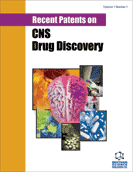Abstract
The blood-brain barrier (BBB) serves to protect the central nervous system (CNS) from damage by exogenous molecules. In doing so, it also can prevent some drugs from reaching their sites of action. Accordingly, a variety of methods for bypassing the BBB have been developed. Ekwuribe et al. recently patented a method for drug conjugation in order to increase lipophilicity, and therefore BBB permeability. Shalev developed a device for opening the barrier via parasympathetic nerve fiber stimulation and Gudkov et al. produced compounds that modulate the activity of multidrug transporter proteins, by either increasing or decreasing the selective permeability of the BBB. A variety of CNS disorders contribute to barrier disruption, and detection of this opening can be used for both diagnostic purposes and for determining time periods when drugs can more easily enter the CNS. While expensive and time-consuming imaging techniques are currently used for this purpose, Janigro et al. have devised a method for detecting plasma levels of S100b, a peripheral protein marker for BBB disruption. These techniques for both "reading" and "writing" the BBB will help new and old medications to reach their pharmacological targets in the CNS.
Keywords: BBB (blood-brain barrier) disruption, S100b, endothelium, CNS (central nervous system) drug delivery, lipid conjugation, P-glycoprotein, parasympathetic stimulation, cerebral microvasculature, multidrug transport modulation
 3
3





















